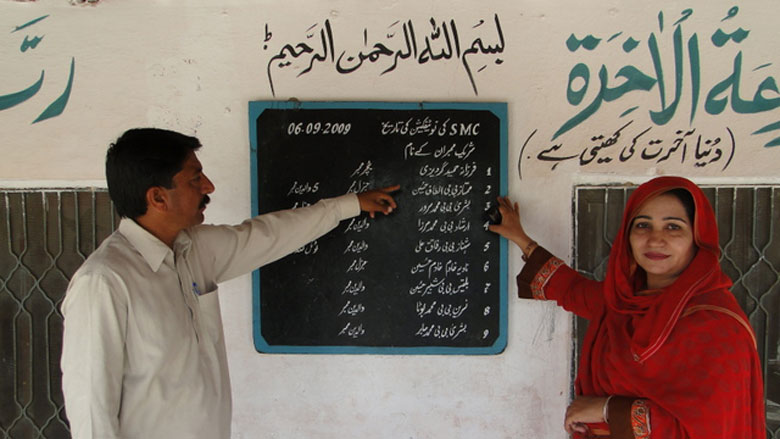A SIEF-funded research team attempted to measure the impact of different approaches for boosting community involvement in education. A pilot project, designed with World Bank assistance, sought to encourage and build closer relations among schools, school committees and local communities. The project was implemented in three districts in rural Sindh, Pakistan, as part of the World Bank-supported Sindh Education Sector Reform Program (SERP-I & II).
The Sindh Education Sector Reform Program gives annual grants to all public schools. Parents and other community members are supposed to decide together via school committees on how to spend the money for school improvement. The grant has two purposes. First, it increases existing funding for schools. Second, it gives parents and community members the opportunity to have a voice in deciding how money for schools can be best used. Over time, it is expected that by involving parents and the broader community in the functioning of the schools, schools will be better managed and learning outcomes will improve.
However, giving school grants generally has not boosted community involvement in school management. The reason is twofold: First, only a select group of individuals in the community have access to information about the amount and delivery date of the grant. Second, even if community members are aware of the grant, they have limited knowledge about how they can engage with the school or school committee in terms of using the grant.
The impact evaluation was designed to help parents and communities directly participate in the improvement of education at the local level by reinvigorating school committees. Parents, school staff and other community members were able to interact with each other at a facilitated community meeting held at the community’s main school. Community members learned about the activities of the school, grants made available to it, and how they could use the school committees to engage with the schools.
The project was designed around the realities of life in rural Sindh province, with an awareness of the particular problems faced by women and the very poor. In a feudal society like rural Sindh, socioeconomic power tends to be concentrated among a few community elites. Community members may not be comfortable talking openly, or critically, with school administrators during a public meeting. Sometimes, the community’s elites – those who own the land and wield power – may not want poor community members to join the meetings. Poor families may not participate to avoid angering those who control their livelihoods. One part of the project used text messaging to create a virtual platform for people to discuss school issues and use of the school grant without being identified, thus, circumventing this constraint.
Using information and communications technology, also known as ICT, proved key. The majority of households in rural Sindh – 74 percent of households in villages and 78 percent of households in towns – have access to a cell phone, according to 2012 project census data. Taking advantage of the high mobile phone penetration rates, the research team developed a supplementary, virtual interface – the Community Dialogue Platform – to link community members to schools using their phones. The Platform opened an anonymous communication channel between community members, teachers and school committees.
